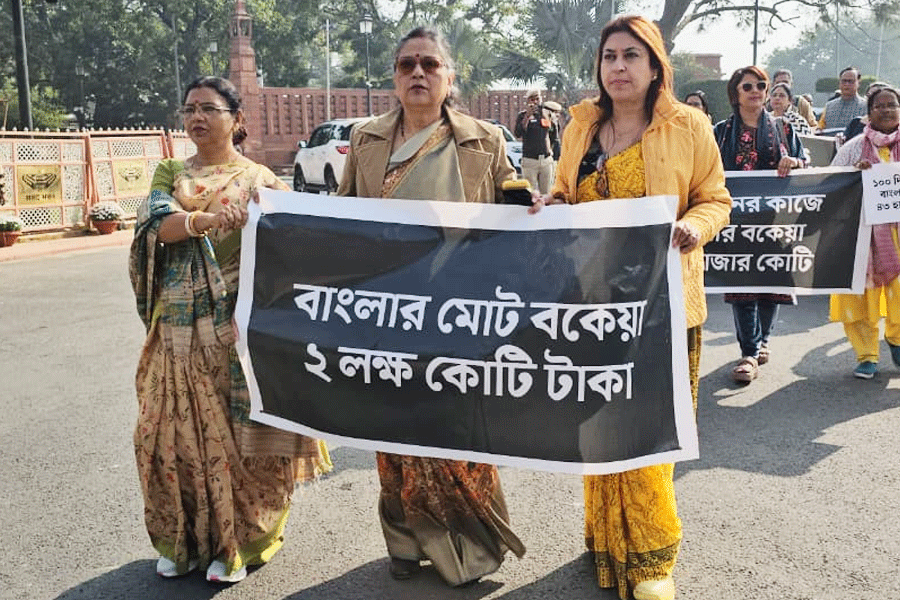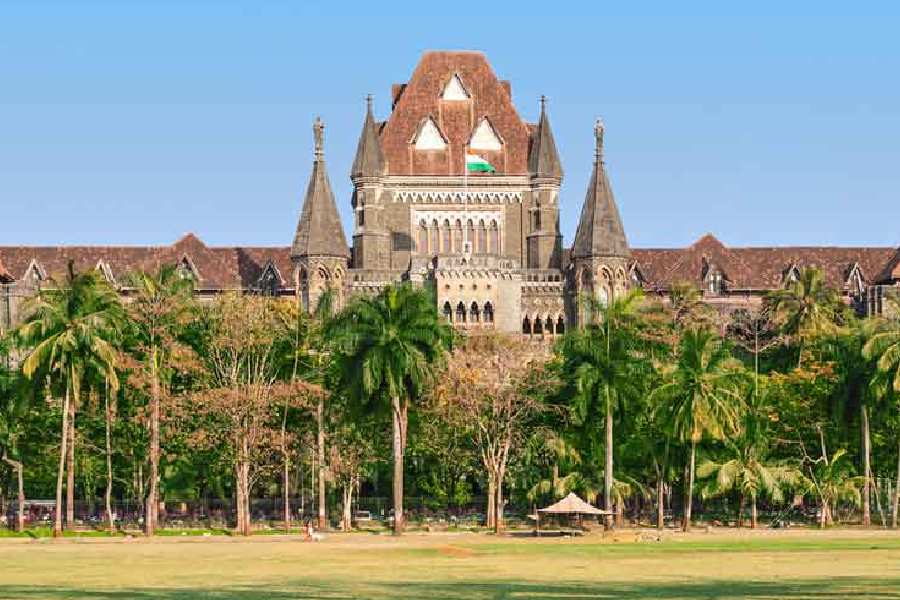 |
Bani Abidi, whose exhibition titled Then It Was Moulded Anew was held at Experimenter gallery from December 5 to January 5, belongs to that breed of savvy, young artists of South Asia whose trendy works are much in demand in the international art market, and who, by virtue of the residencies they are awarded, spend a lot of time abroad. Her website testifies to this. Do such artists have any time for their countries of origin?
Abidi was born in 1971 in Karachi, Pakistan, was trained in Lahore, and later, significantly, in the School of the Art Institute of Chicago, and her works are in the collections of major museums of the West. She now lives in Delhi, is married to an Indian artist, and video and photography are the two mediums that she often chooses to work through. Unlike their counterparts in this country, not many women artists of Pakistan use new media.
As in the Experimenter exhibits, Abidi creates fictional characters and situations to focus on the political situation and social mores of her own country and the country she has chosen to live in. So her work inhabits a space where reality and fantasies meet. She has done this in the past by creating dramatic vignettes reflecting the political and social realities of Pakistan and India in a lateral way rather than by depicting the actual turmoil and chaos in the streets — what she terms “bullet-point reality” in one interview. While this artifice is quite effective in certain works like the series of inkjet prints titled Intercommunication Devices, where she actually communicated the spine-chilling reality of these surveillance machines, and the video, Reserved, in which roads in a city come to a halt as thousands of people patiently await the arrival of a dignitary — a situation most viewers can empathize with — it is not a guarantee of success. As this particular exhibition proves.
This time, the focus is on the video, Death at a 30 Degree Angle, 2012, where two cameras rolled at the same time to record the making of the statue of a political leader inside the studio of an artist who holds a national record for handling such monumental commissions. A turbaned model strikes up a militant pose for the benefit of the sculptor, and while one screen rarely shifts its gaze from him, the other has a roving eye, taking in minute details. While the video definitely takes a wry look at our national obsession with building statues of men and women we regard as our heroes, to say that it is a great piece of satire (as the handout does) is surely a gross overstatement, for relating statues with megalomania is as old as history. Anybody who remembers Percy Bysshe Shelley and a certain gentleman named Ozymandias would get the point.
The photographic installation, Proposal for a Man in the Sea, 2012, is composed of stills taken in the same studio highlighting the various commissions the sculptor has worked on since 1933. These stills could be used as evidence of the sculptor’s experience in this field, and his good relations with the great and the good. One can almost smell the sweet perfume of nostalgia here. But where are the sting and rapier thrust of satire?
The box of 10 flip books titled The Speech Writer, 2011, is again about a fictitious character and it brings to mind a remark that Milan Kundera had made about contemporary art while writing about Francis Bacon: “...in our half of the century, art is clogged with a noisy, opaque logorrhoea of theory that prevents a work from coming into direct, media-free contact with its viewer (its reader, its listener).” Unfortunately, these days, such verbosity is mistaken for a high order of cerebration. And no doubt gallerists think so too.
Abidi, in an interview with Granta, says: “...I started realizing there was nothing I was more wary of than a New York Times-mediated understanding of the world.” But, surely, hers is the kind of art that the Western media would heap high praise on? Even more so because she is a Pakistani Muslim woman and her work would be seen as a perfect example of the triumph of Western modernism. As if the West alone has a monopoly on what can be labelled as modern.
This is the trap that many successful artists from the Third World fall into. They embrace whatever is in vogue in the West without sparing much thought about their relevance to their countries of origin. With globalization, this danger is even greater now.











